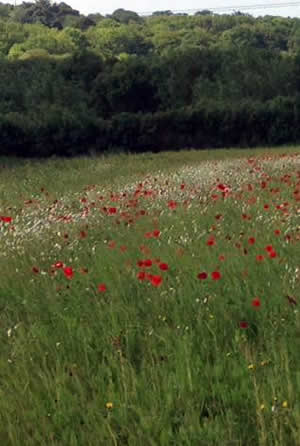Buy Cornish Honey
Further reading:
European Commission. 2001/110/EC of 20 December 2001 relating to honey. Official Journal of the European Communities L10, 47–52 (2002).
https://www.economist.com/united-states/2018/08/30/the-scourge-of-honey-fraud
Codex Alimentarius Commission Standards. Draft revised standard for honey. 19–36 (Geneve, Switzerland, 2010).
Leake, J. Food fraud buzz over fake manuka honey, https://www.theaustralian.com.au/news/world/food-fraud-buzz-over-fake-manuka-honey/news-story/e58d5d067d615b20c71bd04864f4397c?sv=19257289eee96e07ebbd438d97c8a89b (2013).
Andreeva, I. Global honey market reached 6,653M USD in 2015, http://www.indexbox.co.uk/blog/global-honey-market-reached-6,7-million-usd-in-2015/ (2017).
Lohumi, S., Lee, S., Lee, H. & Cho, B.-K. A review of vibrational spectroscopic techniques for the detection of food authenticity and adulteration. Trends Food Sci. Technol.46, 85–98 (2015).
Wu, L. et al. Recent advancements in detecting sugar-based adulterants in honey – A challenge. Trends Anal. Chem. 86, 25–38 (2017).
Padovan, G. J., Jong, D. D., Rodrigues, L. P. & Marchini, J. S. Detection of adulteration of commercial honey samples by the 13C/12C isotopic ratio. Food Chem. 82, 633–636 (2003).
Padovan, G. J., Rodrigues, L. P., Leme, I. A., Jong, D. D. & Marchini, J. S. Presence of C4 sugars in honey samples detected by the carbon isotope ratio measured by IRMS. Eurasian J. Anal. Chem. 2, 134–141 (2007).
Dong, H. et al. Adulteration identification of commercial honey with the C-4 sugar content of negative values by an elemental analyzer and liquid chromatography coupled to isotope ratio mass spectroscopy. J. Agric. Food Chem. 64, 3258–3265 (2016).
Siddiqui, A. J., Musharraf, S. G., Choudhary, M. I. & Rahman, A. U. Application of analytical methods in authentication and adulteration of honey. Food Chem. 217, 687–698 (2017).
White, J. W. & Winters, K. Honey protein as internal standard for stable carbon isotope ratio detection of adulteration of honey. J. Assoc. Off. Anal. Chem. 72, 907–911 (1989).
Association of Analytical Communities. AOAC Official Method 991.41. C4 plant sugars in honey. AOAC Official Methods of Analysis. Sugars and Sugar Products. 29–31 (Arlington, 1995).
Simsek, A., Bilsel, M. & Goren, A. C. 13C/12C pattern of honey from Turkey and determination of adulteration in commercially available honey samples using EA-IRMS. Food Chem. 130, 1115–1121 (2012).
Tosun, M. Detection of adulteration in honey samples added various sugar syrups with 13C/12C isotope ratio analysis method. Food Chem. 138, 1629–1632 (2013).
Guler, A. et al. Detection of adulterated honey produced by honeybee (Apis mellifera L.) colonies fed with different levels of commercial industrial sugar (C(3) and C(4) plants) syrups by the carbon isotope ratio analysis. Food Chem. 155, 155–160 (2014).
Where can you buy genuine Cornish honey? This section of the website enables visitors to find producers of honey in specific areas of Cornwall.
Concern is rising following research showing that not everything labelled in your supermarket as ‘honey’ is actually real honey – or if it is, it may have unwelcome adulteration, such as traces of antibiotics. (See side box for just a few references.)
By buying honey produced in Cornwall from local beekeepers, you can be sure that you are getting exactly what it says on the jar.
Mouse-over the area to get the beekeeper’s contact details.
Honey from The Lizard
Ring 07836 712329
For prices and availability
Honey from Perranuthnoe and Lady Downs
Ring 07970 636380
for prices and availability
Honey from Leedstown
honey@glenview-cornish-honey.co.uk for prices and availability
Honey from Redruth, Camborne, Stithians area
Please ring 07597 975926 or 01209 216756
for prices and availability
Honey from Penzance area
Please ring 01736 368171 or 07890517063
for prices and availability
Honey from Praze an Beeble area
For prices and availability ring 07769 646977


